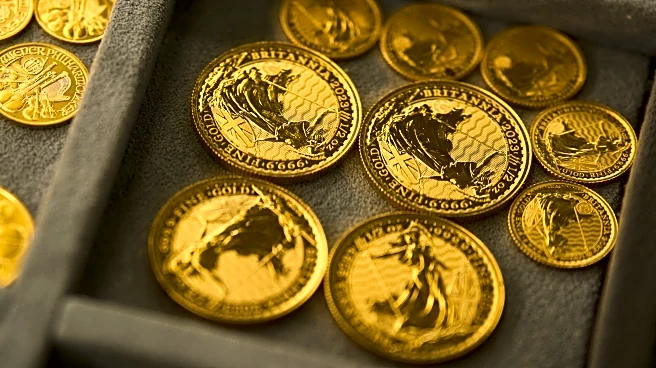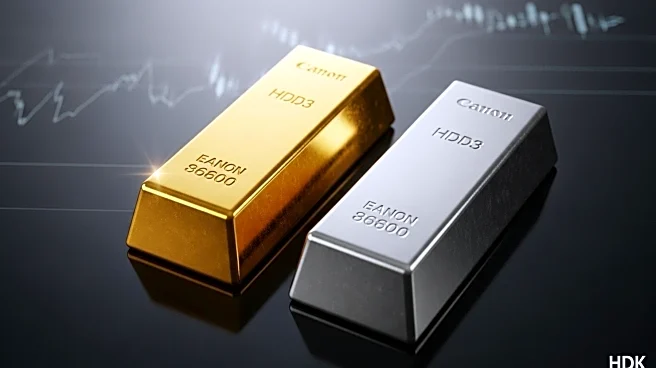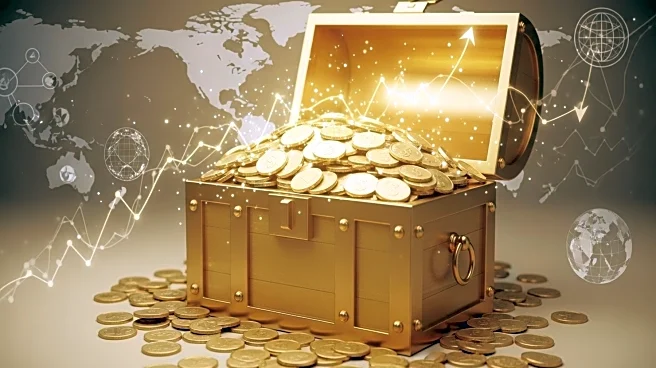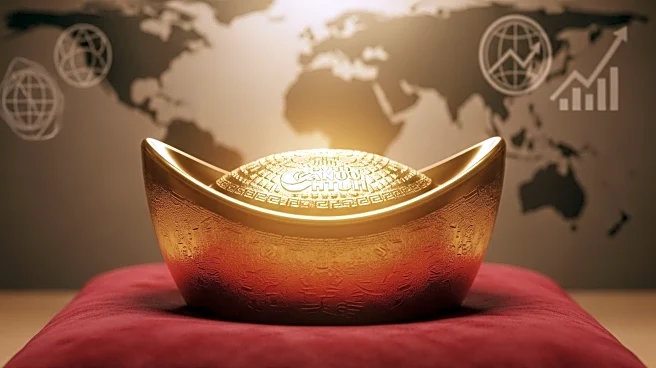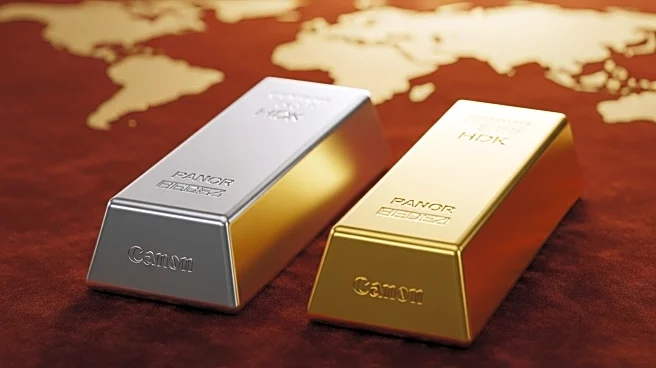What's Happening?
Gold prices have reached a record high, surpassing $3,800 per ounce, driven by geopolitical tensions and economic uncertainty. The ongoing conflicts in the Middle East and the Russian war in Ukraine have contributed to market instability, prompting investors to seek safe-haven assets like gold. Additionally, concerns over the U.S. Federal Reserve's independence under President Trump's influence have added to the uncertainty. The demand for gold has been bolstered by central bank purchases, increased inflows into gold exchange-traded funds (ETFs), and a weaker dollar. Spot gold recently hit $3,895.09 an ounce, marking a 47% increase this year. Silver has also seen significant gains, rising 63% this year and nearing its record high.
Why It's Important?
The surge in gold prices highlights the market's response to global geopolitical and economic challenges. As a traditional store of value, gold's rising demand reflects investor concerns over potential economic instability and shifts in U.S. monetary policy. The increase in gold prices can impact various stakeholders, including investors, central banks, and industries reliant on gold. The trend also underscores the broader implications of geopolitical tensions on global markets, influencing investment strategies and economic forecasts. The rise in silver prices, driven by industrial demand and speculative momentum, further emphasizes the market's sensitivity to macroeconomic factors.
What's Next?
Looking ahead, the trajectory of gold and silver prices will likely depend on the resolution of geopolitical conflicts and the U.S. Federal Reserve's policy decisions. Market analysts anticipate continued demand for gold as a hedge against uncertainty, with some predicting prices could exceed $4,000 per ounce by the end of the year. The potential for further interest rate cuts by the Federal Reserve may also influence investor behavior and market dynamics. Additionally, the inclusion of silver on a draft list of U.S. critical minerals could lead to policy changes affecting its market.
Beyond the Headlines
The current market dynamics reflect deeper economic and geopolitical shifts, with potential long-term implications for global trade and investment patterns. The reliance on gold and silver as safe-haven assets underscores the need for stability in international relations and economic policies. The evolving role of these metals in investment portfolios may also signal a shift towards more conservative financial strategies amid global uncertainties.

